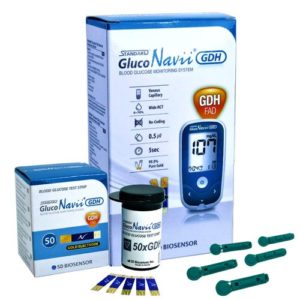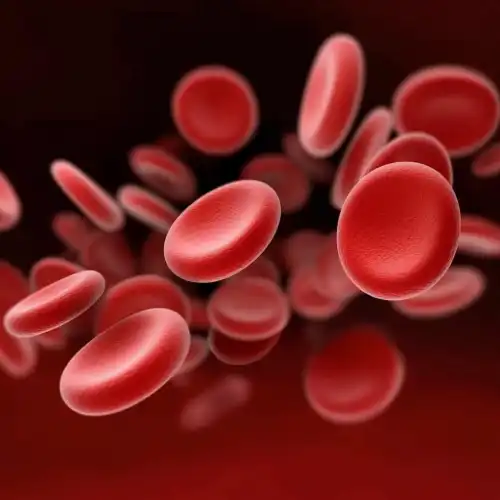Keeping your blood sugar balanced is key to feeling your best every day. Too much sugar in your blood can leave you tired, thirsty, and at risk for serious health problems down the road. The good news? You don’t need complicated routines to manage your blood sugar levels.
I’ve worked with hundreds of clients who’ve made small changes that had big impacts on their health. Whether you’re living with diabetes or simply want to feel more energetic throughout the day, these five easy strategies can help you maintain healthy blood sugar levels.
What Is Blood Sugar?
Blood sugar (glucose) is the main energy source for your body. It comes from the foods you eat, especially carbs. Your body uses a hormone called insulin to help move this sugar from your bloodstream into your cells.
Normal Blood Sugar Levels
For most healthy people, normal blood sugar ranges are:
- When fasting (not eating for 8+ hours): 70-99 mg/dL (3.9-5.5 mmol/L)
- Before meals: 70-130 mg/dL (3.9-7.2 mmol/L)
- Two hours after eating: Less than 140 mg/dL (7.8 mmol/L)
If you have diabetes, your doctor might set different target ranges for you.
What Happens When Blood Sugar Gets Too High?
High blood sugar (hyperglycaemia) happens when your body either doesn’t make enough insulin or can’t use it properly. This can lead to diabetes if left unchecked.
You might notice:
- Feeling very thirsty
- Needing to wee more often
- Feeling tired all the time
- Blurry vision
- Cuts and wounds that heal slowly
What About Low Blood Sugar?
Low blood sugar (hypoglycaemia) occurs when levels drop below 70 mg/dL (3.9 mmol/L). This is especially common in people with diabetes who take insulin, but it can happen to anyone who skips meals or exercises too much.
Warning signs include:
- Feeling dizzy or light-headed
- Shaking
- Sweating
- Feeling confused or irritable
- Sudden hunger
5 Easy Ways to Balance Your Blood Sugar
1. Choose Foods That Don’t Spike Your Sugar
The glycemic index (GI) ranks foods by how quickly they raise your blood sugar. Foods with a low GI are digested slowly, causing a gentle rise in blood sugar rather than a sharp spike.
One patient of mine, Sarah, struggled with afternoon energy crashes until she swapped her lunchtime white bread sandwich for a wholegrain wrap with plenty of protein. The difference was night and day!
Try these simple food swaps:
- Choose brown rice instead of white
- Opt for sweet potatoes over white potatoes
- Pick whole fruit instead of fruit juice
- Add beans and lentils to your meals
2. Get Moving Regularly
Exercise is like a wonder drug for blood sugar control. When you move your muscles, they use up glucose for energy, which naturally lowers your blood sugar. Plus, regular activity makes your cells more sensitive to insulin, so your body doesn’t need to produce as much.
You don’t need to run marathons to see benefits. Even a 15-minute walk after meals can make a big difference. In fact, our regular customers often report seeing improvements in their readings after just a week of daily walks.
Types of activity that help:
- Walking (especially after meals)
- Swimming
- Cycling
- Strength training with weights or resistance bands
- Yoga or Pilates
3. Tackle Stress Head-On
When you’re stressed, your body releases hormones that can raise your blood sugar. This was helpful for our ancestors who needed quick energy to flee from danger, but not so great for modern life’s ongoing stresses.
Managing stress might seem like a luxury, but it’s actually essential for blood sugar control. I’ve seen remarkable improvements in blood sugar readings when people prioritise their mental wellbeing.
Quick stress-busters that work:
- Take 5 deep breaths when you feel tense
- Go for a short walk outside
- Try a 10-minute meditation (there are great free apps for this)
- Do something you enjoy every day, even if just for 15 minutes
4. Don’t Skimp on Sleep
Poor sleep is a blood sugar saboteur! Even one night of bad sleep can make your cells less sensitive to insulin the next day.
Getting enough quality sleep is one of the most underrated ways to keep your blood sugar stable. Many of our customers are surprised when their morning readings improve after focusing on better sleep habits.
Sleep better with these tips:
- Go to bed and wake up at roughly the same time each day
- Make your bedroom dark, quiet and cool
- Avoid screens (phones, tablets, TV) for at least an hour before bed
- Skip caffeine after lunchtime
5. Keep Track of Your Levels
You can’t manage what you don’t measure. Checking your blood sugar regularly helps you understand how your body responds to different foods, activities, and stressful situations.
Modern blood glucose monitors are much easier to use than older models—they need smaller blood samples and give results in seconds. Many of our customers find that occasional testing helps them stay on track, even if they don’t have diabetes.
How to monitor at home:
- Use a reliable blood glucose monitor (we recommend the GlucoRx Nexus model for beginners)
- Test at different times—before meals, after meals, and first thing in the morning
- Keep a simple log to spot patterns (many monitors now connect to smartphone apps)
Common Questions About Blood Sugar
Should I worry about my blood sugar if I don’t have diabetes?
Yes! Blood sugar affects everyone’s energy, mood, and long-term health. Keeping your levels stable can help prevent developing type 2 diabetes in the future.
How often should I check my levels?
If you have diabetes, follow your doctor’s advice—usually several times a day. If you don’t have diabetes but want to learn about your body, checking occasionally (perhaps once a day at different times) for a week can give you valuable insights.
What’s the quickest way to lower blood sugar naturally?
A 15-minute walk is one of the fastest ways to bring down slightly elevated blood sugar. Drinking water and managing stress through deep breathing can also help.
Take Control of Your Health Today
Making small changes in these five areas can have a big impact on how you feel day to day. Many of our customers report more energy, better mood, and fewer cravings within just a few weeks of following these simple strategies.
Ready to start monitoring your blood sugar at home? We recommend the GlucoNavii Blood Glucose Meter. It’s incredibly user-friendly for beginners and requires just a tiny 0.5μL blood sample—much less than older monitors, which means less sore fingers!

The GlucoNavii is actually an improved version of the bestselling SD CodeFree meter, with enhanced GDH-FAD enzyme technology for better accuracy. It can store up to 500 test results and exceeds the EN ISO 15197:2015 requirements for accuracy. Plus, the starter kit includes everything you need to begin testing right away.
Check out our diabetes management supplies and take the first step towards better health today.
Photo by Anthony Cunningham for Zoom Health
Zoom Health is a leading UK supplier of Home Health Tests and Earplugs





